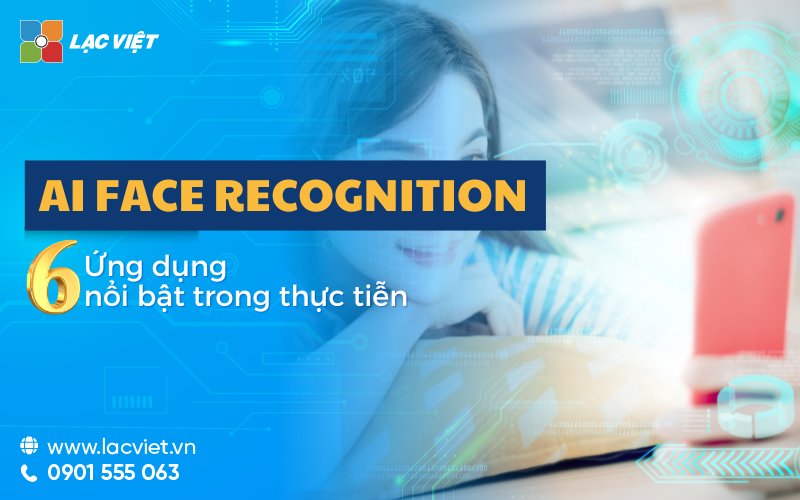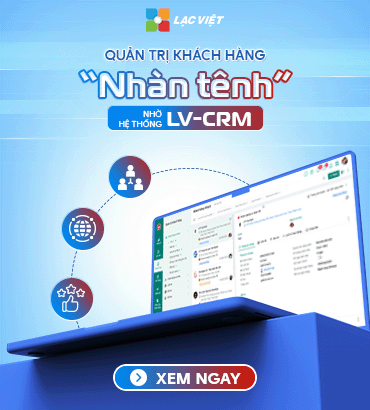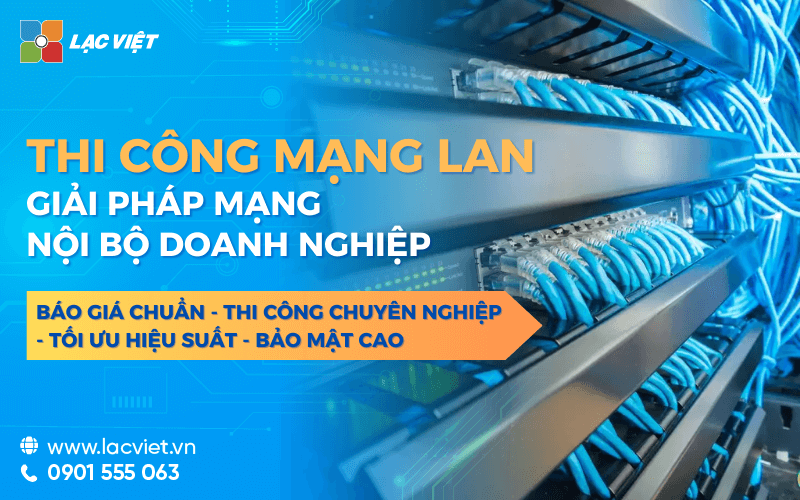Just like how smartphones have changed the means of communication, technology, the AI face recognition are also reshaping the future of industry. AI face recognition not only limited to the application as simple as authentication or security controls, which can be applied in any field, from personnel management, healthcare, to banking and finance, monitoring, public security and more.
So WHO Face Recognition what is? The benefits that algorithm, face recognition AI brings could change the industry going? Let's Lac Viet Computing find out the details in the article below.
1. AI face recognition what is?
AI face recognition or face recognition using artificial intelligence is technology used algorithm in machine learning (Machine Learning) and deep learning (Deep Learning) to detect, analyze, identify faces in photos or videos. This technology works based on the comparison of the facial features with the database already stored, to help determine the identity quickly, accurate.
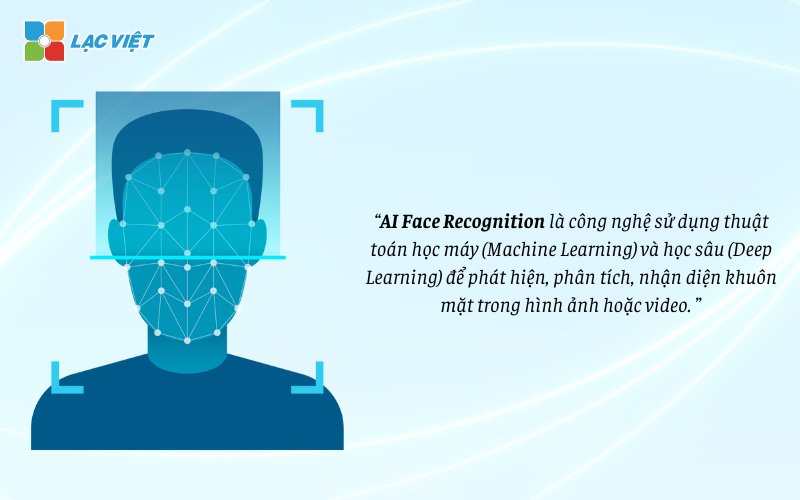
Today, AI face recognition has been widely applied in many fields such as security, financial, medical, or customer service, opens endless potential for business in the improvement of the operating system and user experience.
2. The manner of operation of AI face recognition
System, face recognition using artificial intelligence works through the 4 steps, each step is designed to optimize accuracy and processing speed. Below is detailed description of each stage of the process of face recognition:
Step 1: face detection
The system uses Haar Cascade (a method based on the detection of the geometric characteristics of the face) or DNN to scan and analyze the whole picture. This algorithm quickly identifies the areas likely to contain faces.
AI face recognition is widely applied in the security camera or system, automatic timekeeping ensures recognition accuracy even when users do not look straight at the camera.
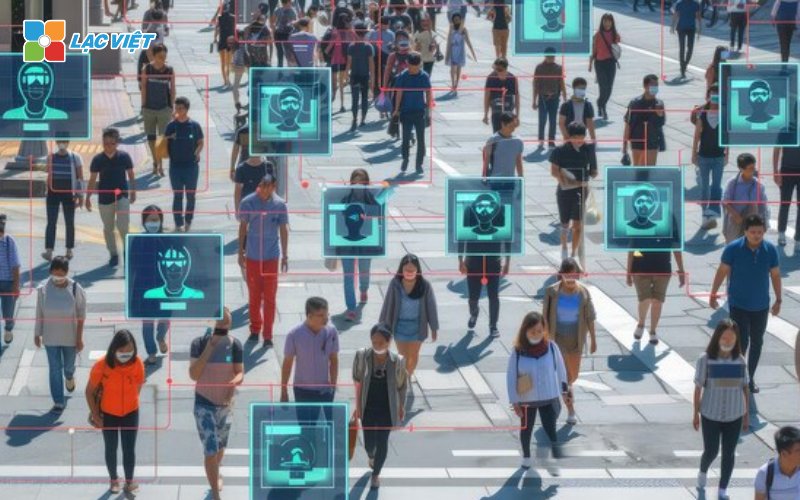
Step 2: analyze the face
Once detected, the system will analyze the specific characteristics of the face to create a map of the characteristic points.
- Analysis of the characteristic points (Facial Landmarks): The face is divided into small areas, such as eyes, nose, mouth and the distance between them. The system uses the point of this characteristic to identify facial structure correctly.
- Data processing: WHO will adjust the image to eliminate confounding factors, such as tilting the head or facial expression, to ensure data consistency.
- Technologies in useModels in deep learning such as Convolutional Neural Networks (CNN) plays an important role in the analysis and shaping of this trait.
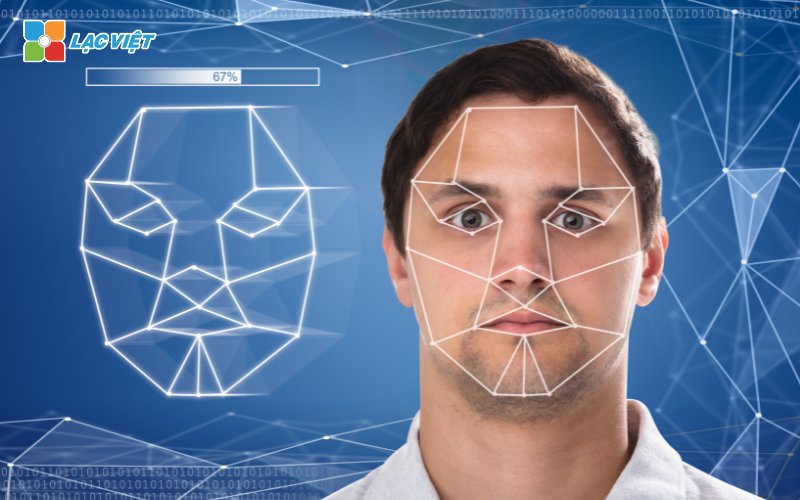
Step 3: Extract facial features
The system encrypts face data into a digitized called “face embeddings”. This is string data, the most exclusive created from the specific characteristics of the face, similar to a “biometric signature”. The face embeddings help the system distinguish the different faces, even when they are similar.
The encoding process:
- AI Face Recognition using the pattern as OpenFace or FaceNet to convert face data into a set of coordinates in multi-dimensional space.
- These values show distinct characteristics, ensure the ability to accurately recognize, including with elements such as glasses, hats, or makeup.
Step 4: comparison and identification
Face data is compared with the database has storage to put out the final results. This process uses algorithms compare advanced to evaluate the joints between the faces, even when there is a change of lighting, facial expressions or angles.
Method comparison:
- Cosine Similarity: Assess the degree of similarity between the face embeddings and the data available in database.
- Euclidean Distance: To calculate the distance between the characteristic points, the smaller the correct level as high.
The results will be displayed in the form:
- Verified if the data matches a specific identity.
- Undefined if no matches any
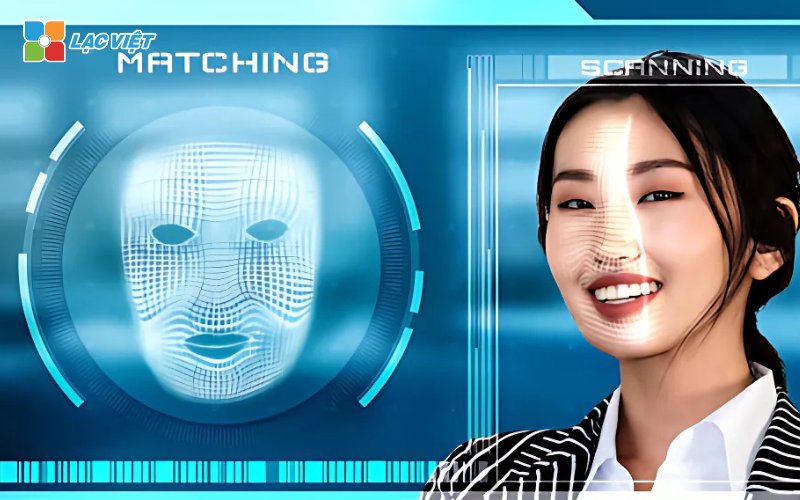
3. Algorithm AI face recognition brings benefits?
Algorithm AI face recognition has reached a new height thanks to the development of the technology of deep learning (Deep Learning) and neural network convolution (CNN). These algorithms not only help improve accuracy, but also improve the speed of processing, which expands the potential application in many fields.
Here are the outstanding benefits that AI algorithms facial recognition to bring:
- AI algorithms now have the ability to recognize faces with accuracy up to 99,97% in optimal conditions, far beyond the traditional methods, as verified by a PIN code or fingerprint.
- The system as FaceNet or DeepFace leverage network CNN to distinguish the characteristics of detail, even with the confounding factors such as tilt angle, poor lighting, or change facial expressions.
- Algorithm can handle thousands of faces within just a few seconds, thanks to the ability of parallel computing and optimization input data.
- This technology suitable for applications that require real-time monitoring at crowded events or managing passenger traffic at the airport.
- AI Face Recognition eliminates the risk of forged through the biometric method. Other with password, face is the single element and can not be copied. The system is also integrated features to detect spoofing (fake) such as use images or videos face.
- App AI in hr management giúp giảm thiểu sự phụ thuộc vào nhân lực cho các nhiệm vụ như kiểm tra ID, giám sát an ninh hoặc quản lý chấm công.
- Minimize errors arising from manual processes, at the same time saving costs, maintenance and upgrade.
4. 6 outstanding application of AI face recognition
Technology AI Face Recognition is being applied strong in many fields, from business management to the national system on a large scale.
Here are more details on the 6 featured apps with evidence, in fact, clearly illustrated the effectiveness of this technology.
4.1 attendance face recognition
Trong nhiều năm, các phương pháp chấm công truyền thống như sử dụng thẻ từ hoặc máy quét dấu vân tay là tiêu chuẩn tại các doanh nghiệp. Tuy nhiên, những phương pháp này thường gặp vấn đề như gian lận chấm công hộ, mất thẻ, hoặc mất thời gian trong quy trình quản lý. AI Face Recognition đã cải thiện đáng kể nhờ khả năng nhận diện chính xác từng nhân viên, loại bỏ hoàn toàn sự gian lận khi kết hợp cùng attendance software.
The way it works is quite simple, scanner will identify staff face when they enter or leave the office. Then, the system automatically store data, work hours, create detailed reports.
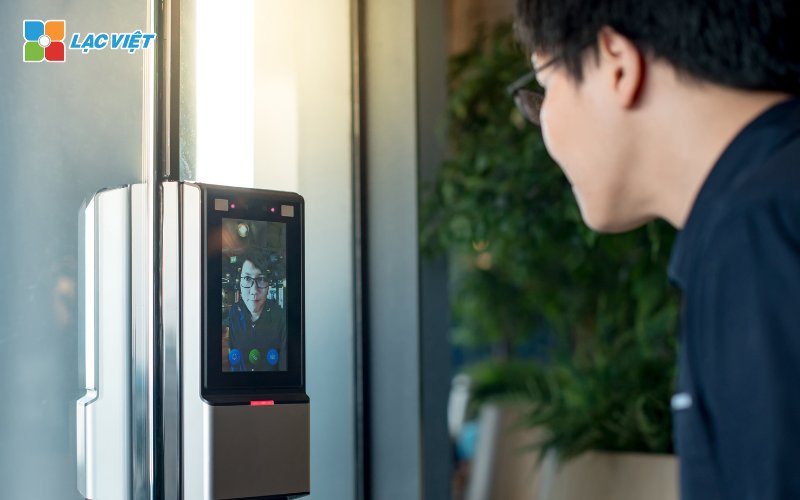
4.2 verification ID for the device
Previously, users often secure your device with a password, PIN or security card – what methods are prone to attack or reveal information. Algorithm face recognition AI has completely changed this approach. With the support of WHO, the identification becomes fast, accurate and almost impossible to copy.
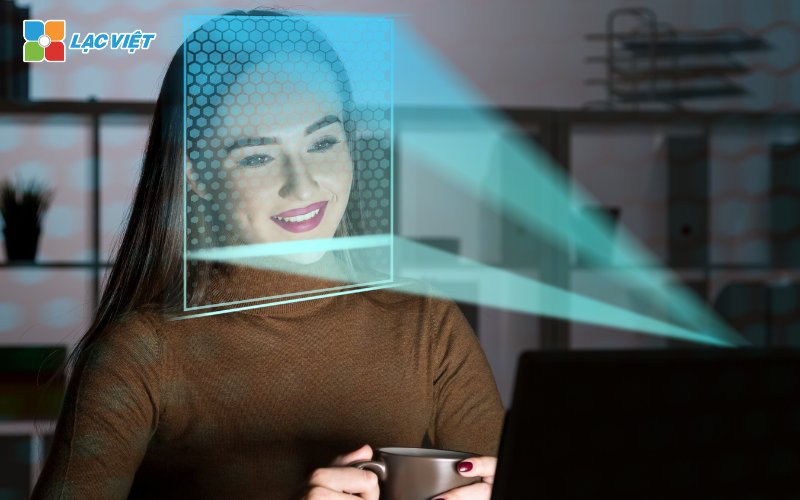
Today, from smartphones, laptops to smart home systems are integrated AI technology, Face Recognition. Users not only unlock your device, but also perform the operation such as transaction authentication or protection of sensitive information.
Facebook start using facial recognition in the United States in 2010 when auto-tagging people in photos by the suggestion tool tagging. This tool scans the user's face, and give hints on who it is. Since 2019, Facebook took this feature option to join as part of efforts to focus more on privacy.
4.3 Ai face recognition in the field of banking and finance
The financial sector has long faced with many challenges for information security and identity verification of customers. Previously, verification of identity is often based on identification or password, easy to be forged or stolen. AI Face Recognition has opened up a new era, allowing financial institutions to enhance security capabilities and simplify the process for customers.
Khách hàng giờ đây có thể mở tài khoản, xác minh thông tin hoặc thực hiện giao dịch trực tuyến chỉ bằng nhận diện khuôn mặt. Ứng dụng AI trong tài chính không chỉ tăng cường độ bảo mật mà còn giúp giảm thiểu thủ tục phức tạp.
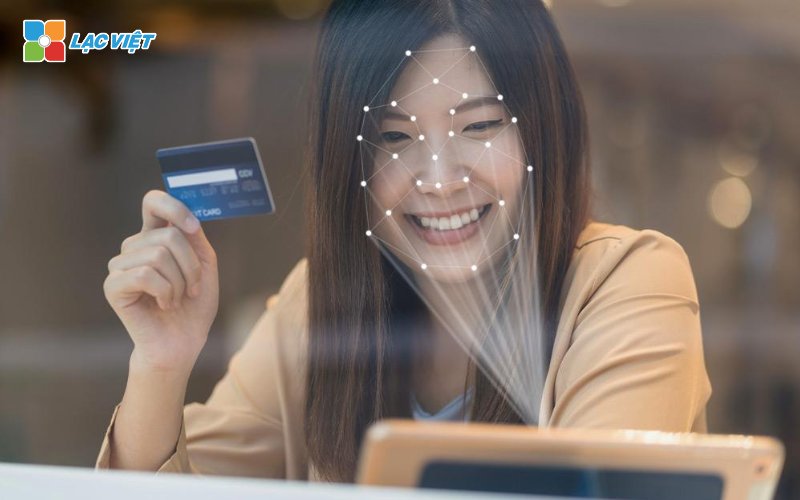
Bank DBS in Singapore have applied face recognition allows customers to open bank account within just 5 minutes without coming to the branch. DBS became bank pioneer in the application of AI face recognition in the South East Asian region.
4.4 health care
AI Face Recognition brought a big step in the medical field, especially in patient management and health monitoring.
This technology is integrated into the medical device to recognize emotions, detect health status through facial expressions or early warning of the unusual.
In China, a large hospital have applied the system of face recognition to monitor patients with COVID-19 in isolation ward. This system not only help timely detection of unusual symptoms, but also reduce the risk of cross-contamination for medical staff.
4.5 System security national
In the situation that requires monitoring closely as border management, station, or public areas crowded with people, WHO Face Recognition exert the maximum effect.
This technology not only helps to identify crime but also support object tracking in real time, minimizing the risk of losing security.
Today, this technology is deployed in public places such as squares, railway stations, border to detect and alert the suspects in real-time.
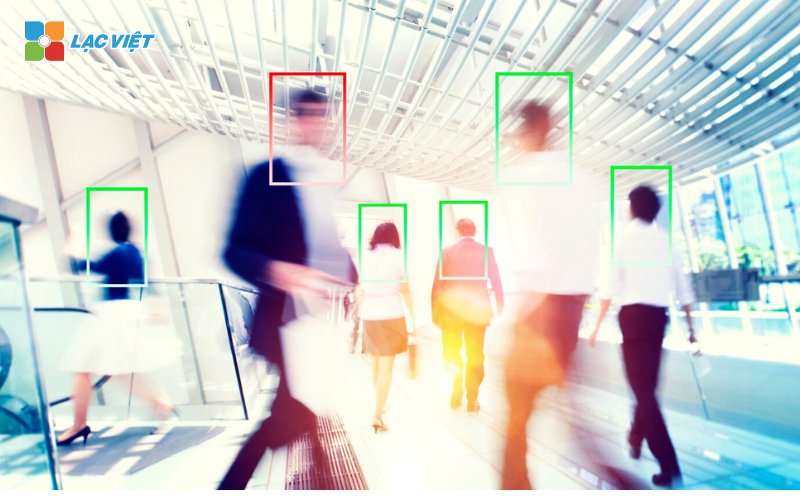
4.6 Monitoring at the airport, train station, public places
Process paper check at the airport, the station usually takes a lot more time and occurred errors. AI Face Recognition has helped completely change the way to operate, from the control passengers to manage traffic flow in crowded areas.
Today, many of the airport and the station has applied this technology to automate processes, checks, collated information with data storage.
Changi airport in Singapore has implemented the system, face detection for optimizing the check-in process, helps to reduce the processing time down to 10 minutes which still guarantee the absolute security
Technology AI Face Recognition now open a new era for the business with potential application to excel. From improving effective personnel management, improve customer experience, to ensure security and confidentiality, this technology proved of value in all areas. If your business is looking for advanced solutions to optimize process operation, this is the ideal time to invest in AI facial recognition.
CONTACT INFORMATION:
- Lac Viet Computing Corporation
- Hotline: 0901 555 063 | (+84.28) 3842 3333
- Email: info@lacviet.vn – Website: https://lacviet.vn
- Headquarters: 23 Nguyen Thi Huynh, P. 8, Q. Phu Nhuan, Ho Chi Minh city

